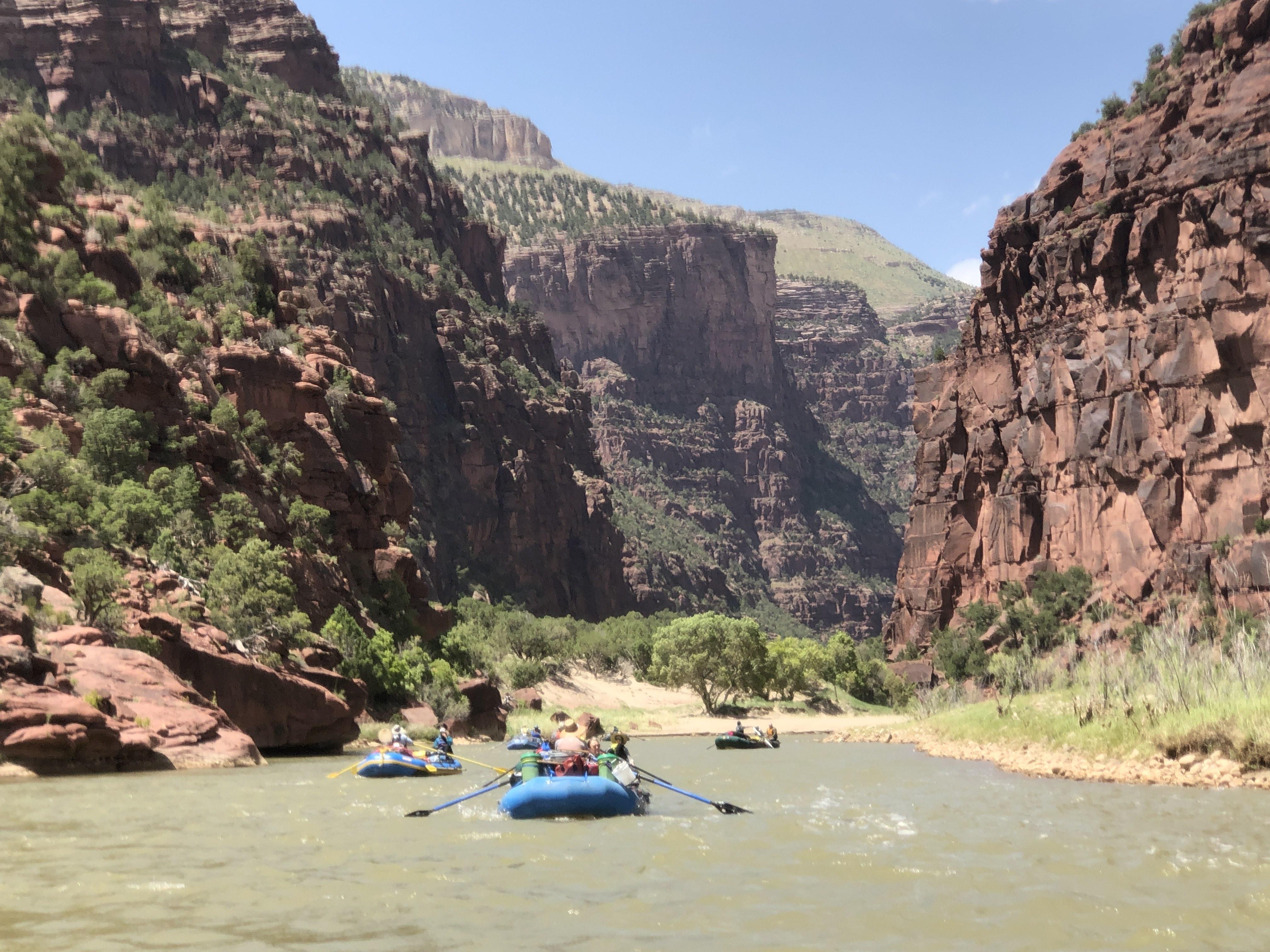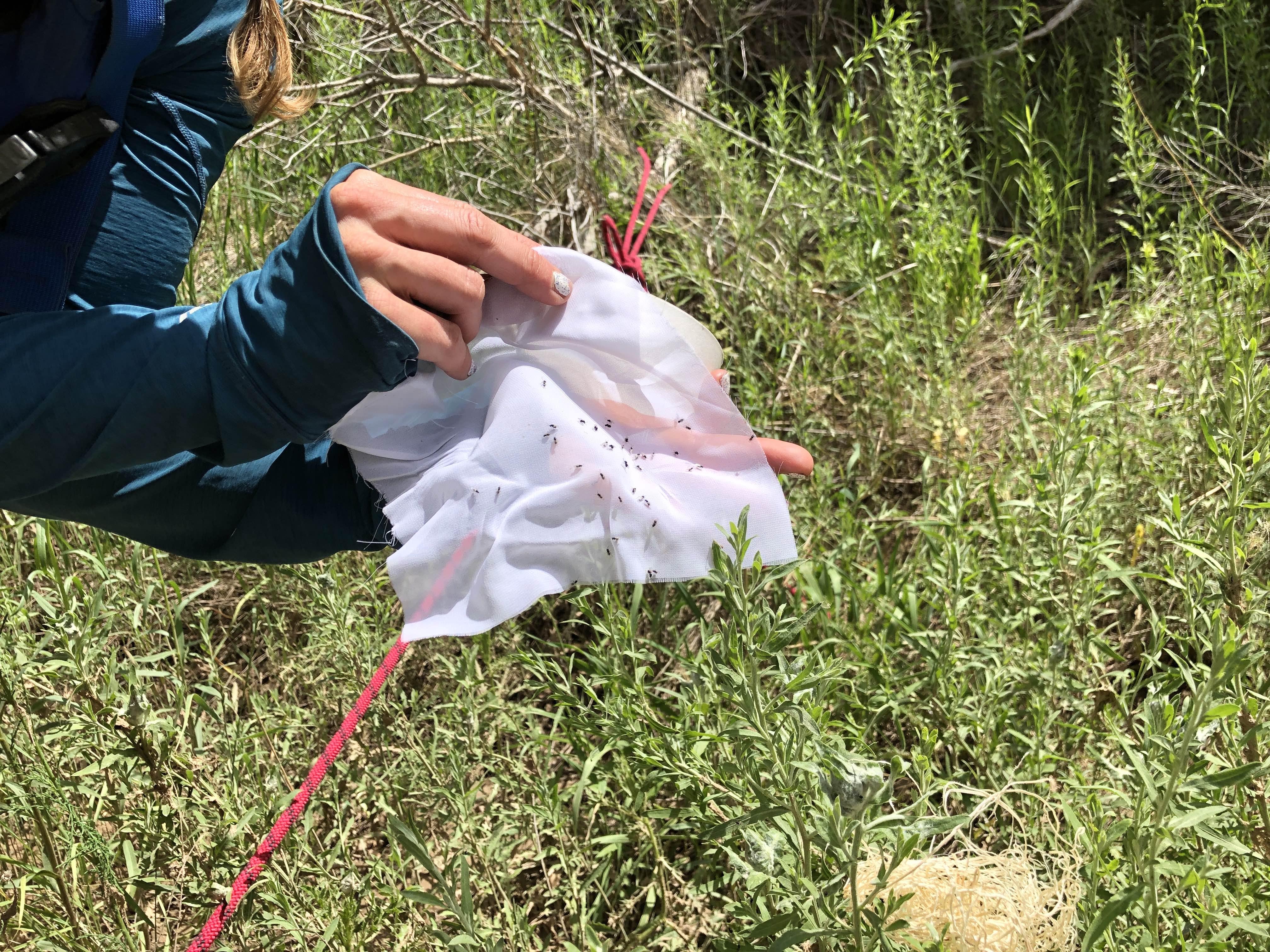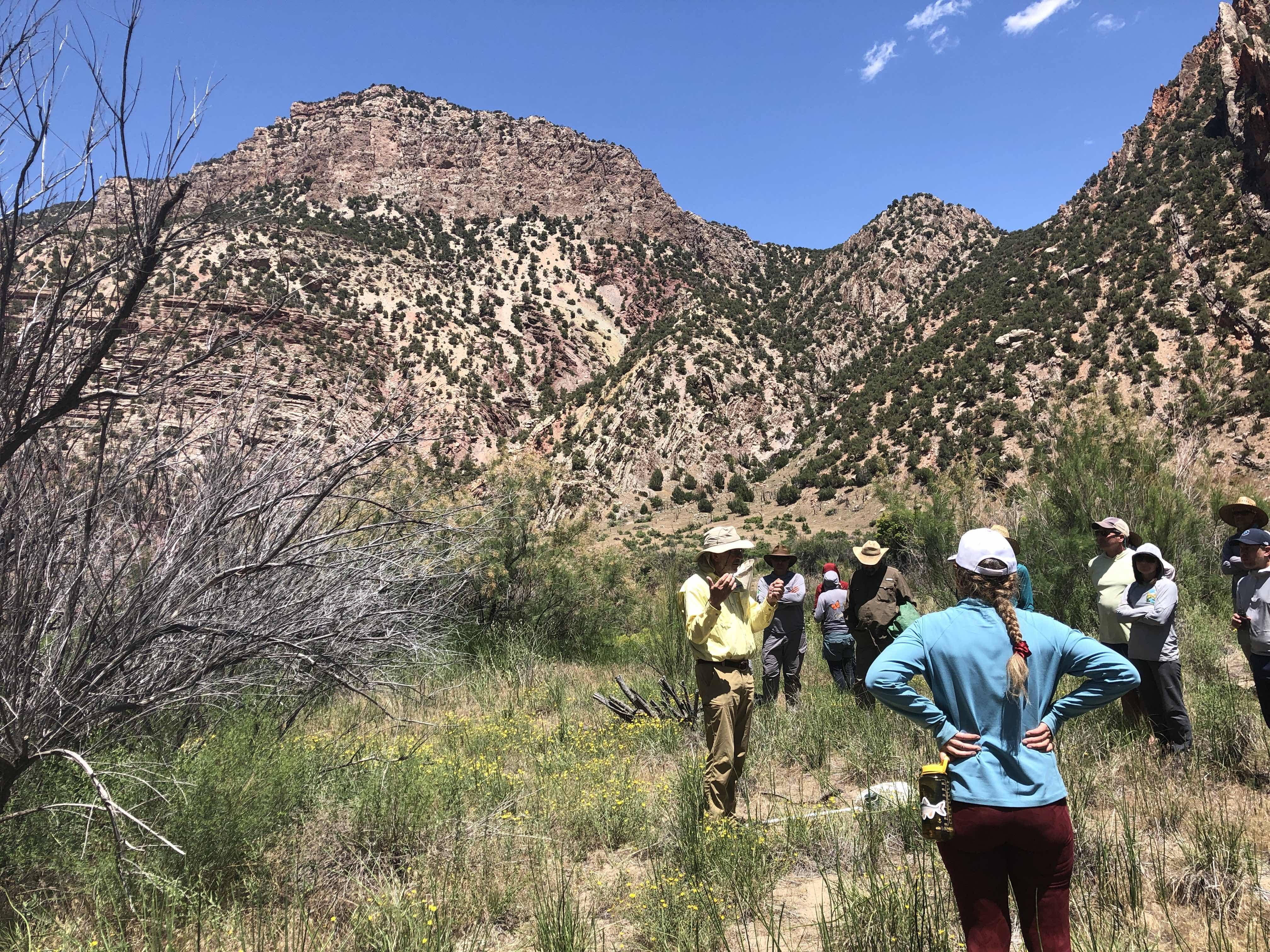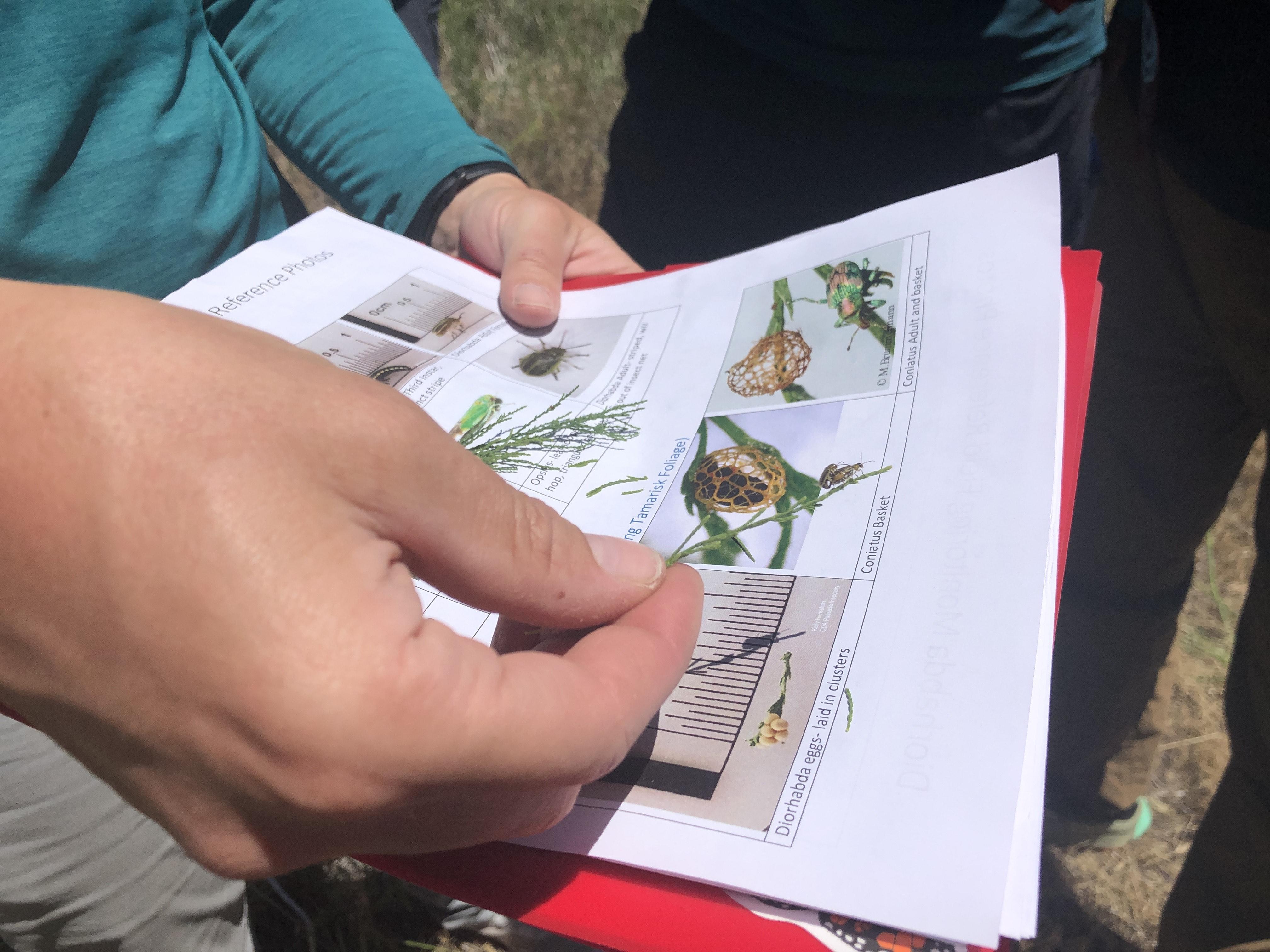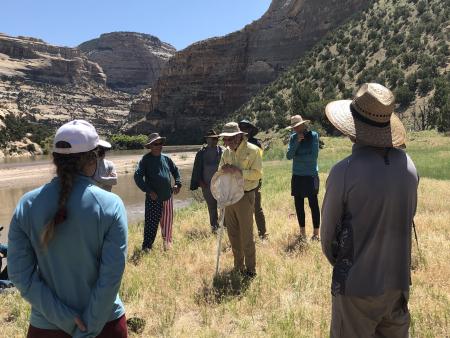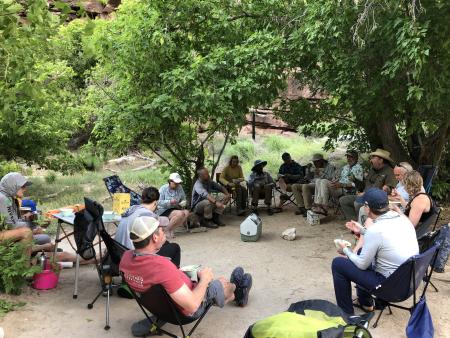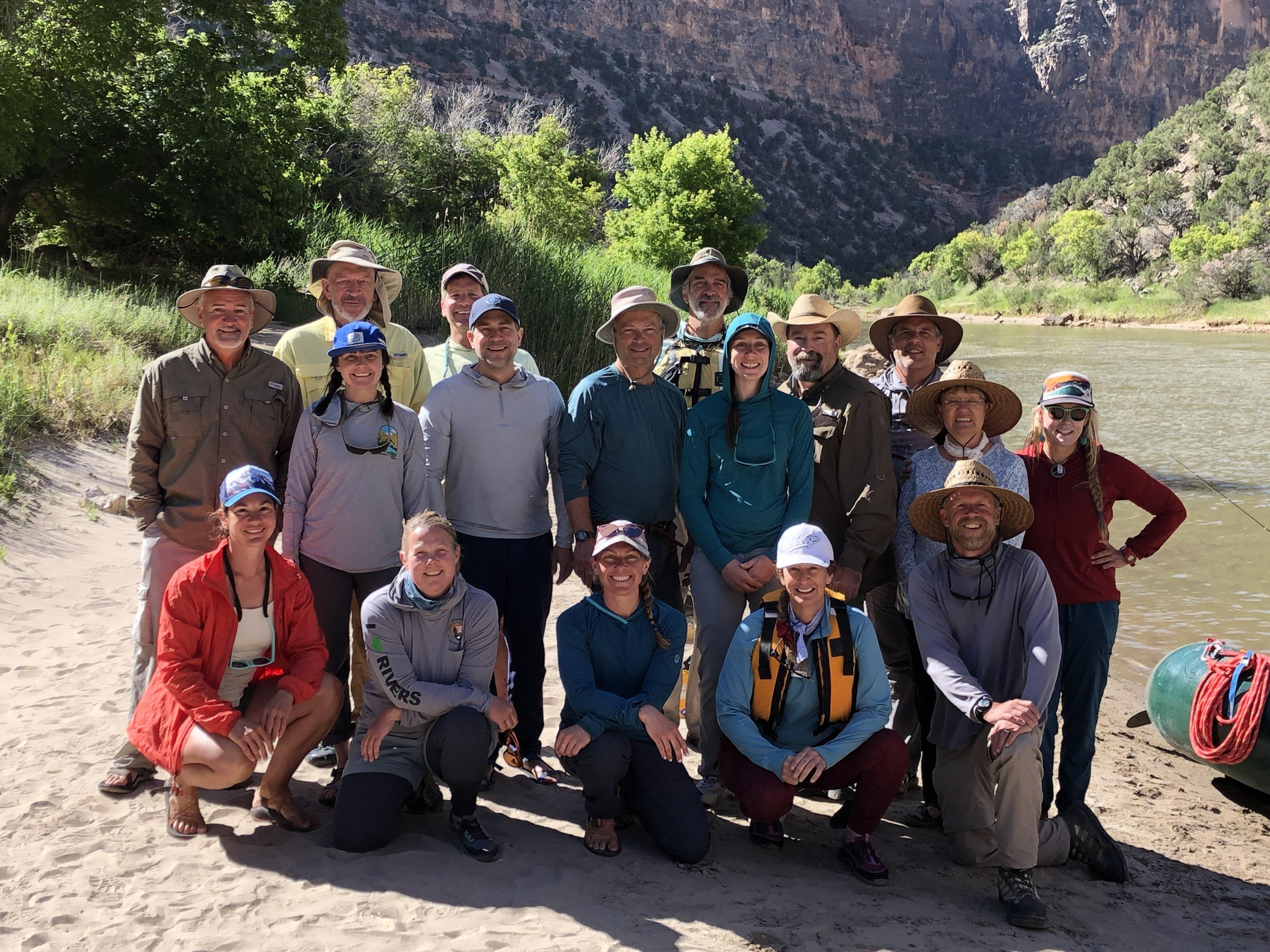Article #1 in our Summer Wrap Up Series explores CDA’s first group tour of Summer 2023.
By Bethany Howell
It’s a cool morning on the river, but the sun coming over the canyon walls promises to be here any minute, and with it, some welcome warmth to keep us company on the water.
Today, Colorado Department of Agriculture staff including Commissioner Greenberg are out in Dinosaur National Monument, rafting the Green River with members of the Palisade Insectary team, park volunteers, and state and local decision makers. The sun might not be past the canyon wall, but we’ve already braved a few runs of incredible rapids thanks to the expert maneuvering of our volunteer raft guides.
While the trip has offered a lot of highlights so far - exciting rapids, delicious meals cooked outdoors, plenty of time for conversations and stories, and getting to know new people - we’re here for more than a good time. We’re here for the bugs.
It’s our third day on the Green River after launching from the Gates of Lodore and we are now at one of the sites where tamarisk, or salt cedar, has been defoliated enough to die. While it might seem macabre to stop and gloat at the sight, this gnarled tamarisk is just one of many that has infiltrated the streambanks along the Green River, and indeed streambanks across the western United States.
As a main tributary to the Colorado River, the Green and its sister river, the Yampa, have been the focus of a long term ecological study on the effects of biocontrol on non-native (or invasive) species. This study has been led by Palisade Insectary, one of CDA’s longest running research programs (the Insectary celebrated its 75th anniversary in 2020).
The Insectary is based in Palisade for a very good reason. This is where Colorado’s famous peach orchards are located, now joined by cherries and other delicious fruit trees nearby.
In 1945, beset by the peach moth which lays eggs under the skin of the peach near the stone and therefore cannot be killed by ordinary pesticide sprays, farmers supported the formation of a unique bio-control program. Unique in that it’s the only one of its kind in the United States, and that it is has continually and successfully bred parasitoid wasps that kill the peach moth larvae, thus saving Palisade peaches year after year when farmers are given the wasps at the start of each season.
Parasitoid wasps were just the beginning. After long years of study and data analysis, the Insectary has multiple biocontrol agents that help control the invasion of non-native species such as field bindweed, tamarisk, and Russian knapweed, with other species such as dalmatian and spotted toadflax waiting their turn. These biological control agents including insects, mites and pathogens insects are beneficial to a diverse set of systems, from orchards on the Western Slope to backyards on the Front Range, and up and down the mighty Colorado River.
On our very first day, before reaching the tamarisk death zone, our group stopped to release Russian knapweed gall wasps, which target the long leafy weeds by burrowing into the plants’ tender stems. The plants’ defensive mode is to form galls around the wasps, spending their energy on this formation instead of their long root systems or new leaves. Now the plants are weakened, susceptible to other insects, diseases, or death after no longer having the energy to sustain their growth.
Lest you feel sorry for the knapweed’s demise, similar to leafy spurge and other non-native species, Russian knapweed releases allelopathic chemicals which can suppress other plant species, allowing only Russian knapweed to survive. Infestations reduce populations of native plants and interfere with the ecological balance as they push out their neighbors. Diversity is life. Monoculture, like monotony, is death.
We’ve therefore had a taste of the thrill of releasing thousands of tiny diversity agents and were ready for more. The tamarisk beetle, or Diorabdha carinulata, has been working these streambanks since the first release in 2006, and their pace has been steady but not fast.
As Dan Bean, the program manager for the Insectary, warned the group, biocontrol is not a quick solution. Insects need time, space, and the right environment to live and thrive. Bean has studied Diorabdha spp. for years and is enthusiastic about its long term sustainability (so much so that if you ever have the chance to meet him, ask about his beetle tattoo).
While the group listened to Dan’s description of the diorabdha’s possibilities, we were treated to the sight of one buzzing around the area. Kristi Gladem, fellow Insectary staff, showed off the less than 1 inch beetle whose companions were responsible for the weakened shrub before us.
You won’t have much sympathy for the tamarisk after witnessing the consequences of unchecked growth. A former cobble bar (large river rocks piled up together that allow for the passage of water and keeps temperatures cool) that is a favorite razorback sucker spawning area is now an extensive sand bar thanks to the tamarisks’ root systems which hold silt in place instead of keeping it moving downstream. Razorbacks cannot spawn in the increased temperatures precipitated by the now slow moving water around the silted up bar. They have no place to hide their eggs between rocks until the next high flow of water pushes the baby fish downstream during the right season. Not only do the fish suffer, but slow moving and higher temperature water makes it more difficult for the river to make deliveries downstream for irrigation and for federal compact obligations.
Seeing the ecological impact of tamarisk on wildlife, knowing that climate change’s increasing temperatures and decreasing water supply exacerbates every issue, was eye opening for the group.
Our raft guides expressed similar epiphanies when they began working with the Insectary’s volunteer weed management program. In a conversation with Joe Greiner, a former whitewater raft company owner from the Arkansas River basin, we heard yet again a familiar theme. Joe and his fellow guides are committed to making an impact on our waterways. After spending years enjoying Colorado’s rivers themselves, their determination to keep these waters as a place for future generations to enjoy is a powerful motivator. This can’t be accomplished in one season or even several seasons of biocontrol. It’s a slow slog that must be sustained over generations for our rivers to experience the impact.
The sun now rose high above the canyon’s opening as we entered the series of rapids that would deliver us to the take out in Split Mountain, Utah. But while we may have crossed state lines, leaving Colorado behind wasn’t apparent. There’s no red line or even a sign marking the border. The interconnection of water, wildlife, and vegetation remains the same, it’s only the map that changes.
The people on our trip represented what’s needed to give our rivers a fighting chance to be the same incredible experiences for our children and grandchildren. Policy makers, agency partners, volunteer community members, scientists, and river lovers. For some of us, this was the first time experiencing the power of a long river trip, but it won’t be the last. The river makes true believers once it’s had a chance to work its slow magic.
Each day on the river is a gift. It’s a chance to disconnect from phones and email and really focus on the world around us every day. This sounds like a cliche, but it probably felt similarly for the early explorers and artists whose marks we saw high up on the canyon walls. There is peace on the water. There is excitement. There is fear. And there is the chance for modern humans to leave a mark as well. Ensuring it’s in tune with the river system, that’s still a work in progress.
